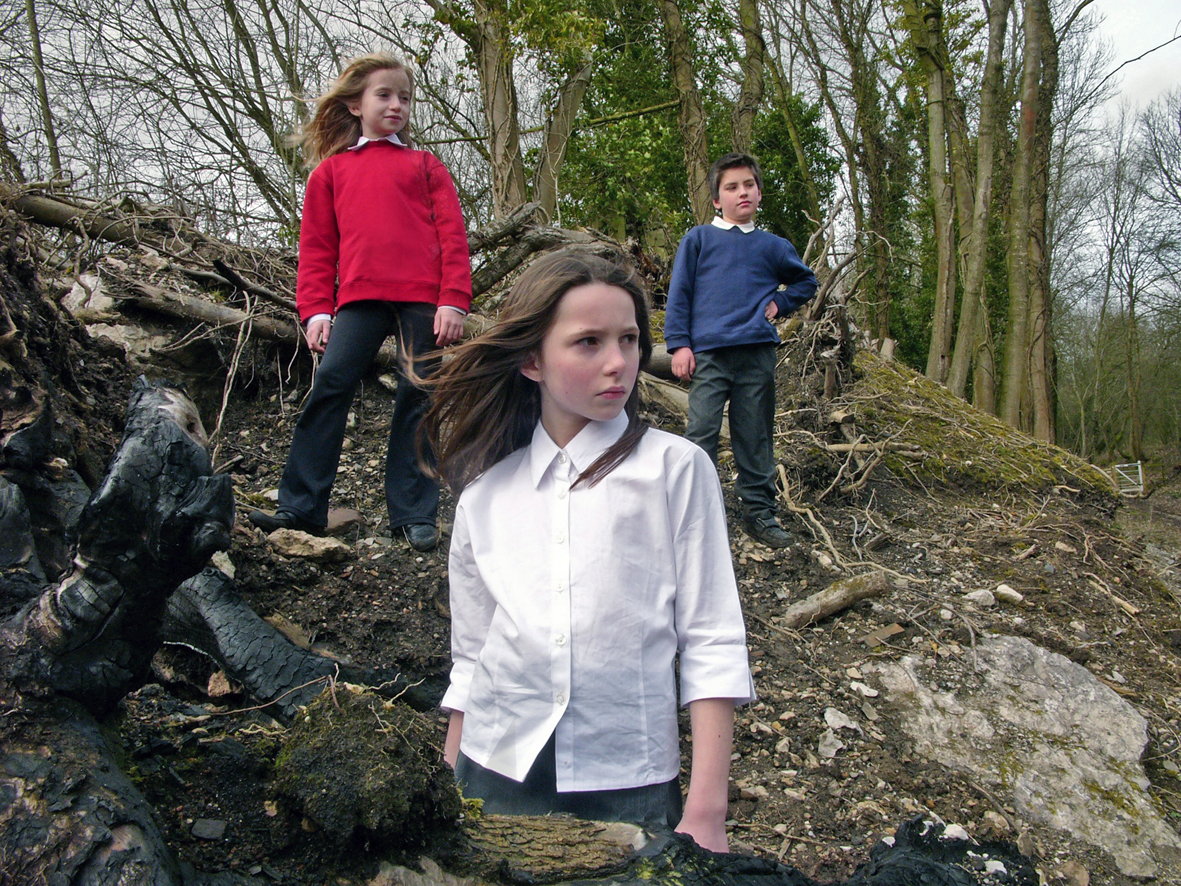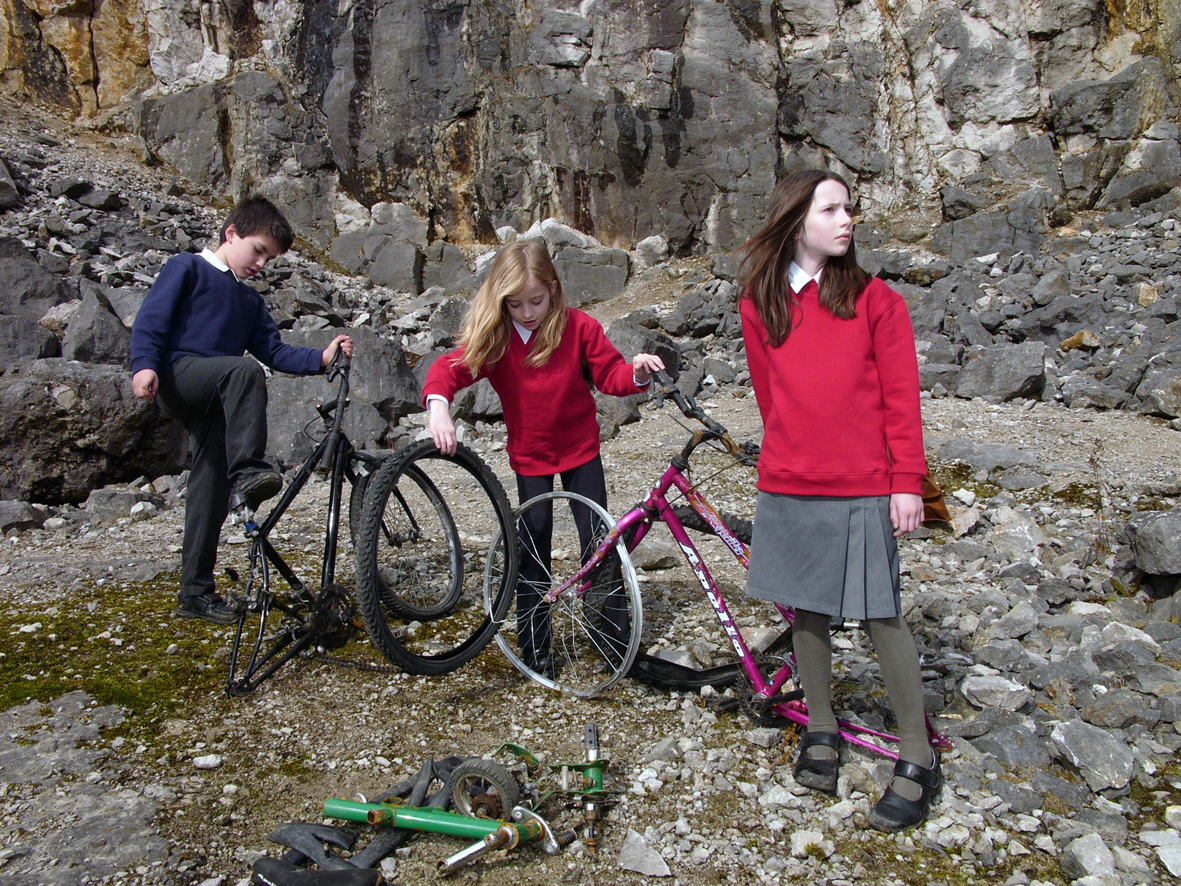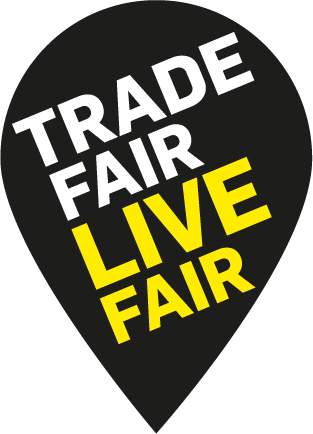Makati City, Philippines – In a groundbreaking collaboration, Fashion Revolution Philippines, iAcademy, and Lee Jeans Philippines have come together to create a unique and sustainable fashion collection. The project, dubbed “Segunda Mana,” showcases the power of upcycling and the ingenuity of Filipino design students.
A Second Life for Denim
Lee Jeans Philippines donated a trove of old denim stock to iAcademy, challenging the students to transform the materials into a modern streetwear collection. Under the guidance of fashion designer and teacher Irene Grace Subang, the students delved into the art of deconstruction and draping, using Filipino mysticism and superstitions as their inspiration.
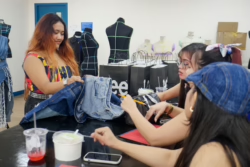
The “Segunda Mana” collection is a testament to the creativity and resourcefulness of the iAcademy students. By working exclusively with upcycled denim, they not only reduced their environmental impact but also created pieces with a unique story to tell. The collection’s intricate designs and thoughtful use of materials showcase the potential of sustainable fashion.
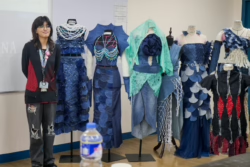
Showcasing Filipino Talent
A portion of the “Segunda Mana” collection was featured during iAcademy’s SODA Week, providing a platform for the students to showcase their work to a wider audience. The event culminated in a fashion show featuring designs from both current and former iAcademy students, highlighting the school’s commitment to nurturing young talent.

The collaboration between Fashion Revolution Philippines, iAcademy, and Lee Jeans Philippines is a significant step towards promoting sustainable fashion in the Philippines. By demonstrating the possibilities of upcycling and the creativity of Filipino designers, the project has the potential to inspire others to adopt more environmentally conscious practices.
The UK government has said it wants all pupils back at school in the autumn, but there is uncertainty as to what children will be permitted to wear. Blazers and ties, which can’t be washed every day, may be banned to reduce the spread of Covid-19 and an affordable uniform bill currently going through Parliament would require schools to offer unbranded choices in order to reduce costs. This follows the statutory guidance introduced in Wales last year to make school uniforms more affordable, accessible and gender-neutral.
As parents’ thoughts turn to back-to-school, Fashion Revolution warns that the chemicals found in school uniforms could prove a risk to children’s health. In Europe, around 15,000 chemical formulations are used in textile production[i] and it takes between 10% and 100% of the weight of the fabric in chemicals to produce that fabric.[ii] Many of these chemicals are found in our clothing, including pesticides, dyestuffs & pigments, crease-resistant agents, oil & water repellents and antibacterial agents. The skin is the body’s largest organ and, since it is porous, it can absorb harmful chemicals which then enter the blood stream.
School uniforms are frequently advertised as stain-resistant, non-iron or easy-care, but many of the chemicals designed to make uniforms easier for parents to launder are known to be damaging to human health and to wildlife. After evidence of serious health problems from the use of PFOA, used by DuPont to make Teflon, a coating frequently used to make school clothing stain and water repellent, came to light, it was phased out under a voluntary agreement and in May last year more than 180 countries agreed to ban its production and use under the international Stockholm Convention on Persistent Organic Pollutants (POPs). It is known that PFOAs remain in the body for a long period of time and have been found in almost everyone in the world and even in penguins and polar bears.
The next generation of chemicals, known as PFAS (Perfluoroalkyl and Polyfluoroalkyl Substances), may be a regrettable substitute as evidence from the US Environmental Protection Agency (EPA) suggests their effects are just as bad or even worse than the chemicals they have replaced. PFAS chemicals are not only harmful to wildlife and the environment, but there are probable links to tumors and cancer, liver and kidney function, hormone disruption and reduced immunity.[iii] The US based Agency for Toxic Substances and Disease Registry reports that this is an area of particular concern during the current Covid-19 pandemic as studies suggest that exposure to PFAS may reduce antibody responses to vaccines and may reduce resistance to infectious diseases. More research is needed to understand how PFAS exposure may affect illness from COVID-19. [iv]
Even when clothing doesn’t come directly into contact with the skin, such as blazers and outerwear, it can still have significant health implications. One survey found that “the drying and storage of winter clothing indoors in schools and institutions may possibly in the worst case cause significant indoor air exposures …thereby contributing to the health problems that can result from the combined exposure to PFASs”.
Although these chemicals should mean that school uniforms last longer and need to be washed less frequently, a study concluded that the chemicals actually made no difference to parents laundering and purchasing habits, which raises the fundamental question of whether they are needed on our clothing in the first place.[v] Moreover, current government guidance is to wash school uniforms on a daily basis.
Formaldehyde is another chemical that has been used in clothing for decades due to its ability to reduce wrinkling and is widely found in school uniforms that are advertised as easy-care or non-iron. When it comes into contact with the skin, formaldehyde can cause rashes and allergic reactions[vi]. Formaldehyde, along with disperse dyes which are typically used to colour synthetic yarns and fabrics[vii], is being cited as one of the chemicals which caused some airline staff to become highly allergic to their uniforms, resulting in over 500 Delta employees filing a class-action lawsuit against the uniform manufacturer earlier this year. Although formaldehyde eventually washes out of clothing, studies have found that there is no reduction in formaldehyde levels after two washes. Delta employees claim they were still suffering allergic reactions a year after they received their new uniforms[viii].
Fashion Revolution’s Fashion Transparency Index was released in April 2020 and included 250 of the world’s biggest brands and retailers, including all of the major UK high street school uniform retailers. 60% of the brands in the Index weren’t publishing a Restricted Substances List, so there is often no way of knowing what chemicals are, or aren’t, permitted to be used in the manufacture of school uniforms.
Parents can be a powerful force to bring about change. Ask #whatsinmyclothes to let brands and retailers know we don’t want materials which compromise children’s health and nature’s ecosystems, and request that your school offers chemical-free options if there is no choice of retailer. Writing to your local MP to encourage support for the school uniform bill will also help to ensure a wider choice of uniforms are made available to all parents.
The first step when buying a new school uniform is to see how much is disclosed about the coatings and treatments used, either in the product description section of the website or on the garment label in store. For parents on a tight budget, this is a rare case where the best option can also be the money-saving choice as school uniforms which are not sold as non-iron, stain-resistant, water-repellent or easy-care tend to be cheaper and are offered by many retailers[ix]. Parents who children have a pre-existing skin condition like eczema or dermatitis may want to choose an organic option. Fashion Revolution also recommends buying second-hand school uniform as the more a garment has been washed, the more likely it is to have shed most or all of its chemicals. Where there is no option but to buy new school uniforms with chemical treatments, they can be soaked for a day in a bucket with baking soda. Alternatively, adding white vinegar to the wash cycle will also to help remove formaldehyde. Ideally,the clothing should then be line-dried for a day before being worn[x]
Ask #WhatsInMyClothes? Click here for our free printable posters and learn more about asking brands and policymakers ‘What’s in my clothes?‘ in our digital activism guide.
[i] https://www.sgs.com/en/news/2017/07/aiming-for-zero
[ii] Jain 2017 https://scientificresearchjournal.com/wp-content/uploads/2017/06/Home-Science-Vol-4_A-623-633-Full-Paper.pdf
[iii] https://www.epa.gov/pfas/basic-information-pfas
[iv] https://www.atsdr.cdc.gov/pfas/health-effects/index.html?CDC_AA_refVal=https%3A%2F%2Fwww.atsdr.cdc.gov%2Fpfas%2Fhealth-effects.html
[v] https://www.pfasfree.org.uk/wp-content/uploads/FidraUniformSurvey_Report_Final.pdf
[vi] https://onlinelibrary.wiley.com/doi/full/10.1111/j.1600-0536.2009.01582.x
[vii] https://link.springer.com/article/10.1007/s40521-019-0197-5
[viii] https://www.theguardian.com/business/2019/apr/03/delta-flight-attendants-uniforms-rash-claims
[ix] https://www.ethicalconsumer.org/fashion-clothing/stain-resistant-school-uniforms
[x] https://www.wikihow.com/Remove-Formaldehyde-from-Clothing#:~:text=Allow%20your%20clothes%20to%20off,may%20be%20in%20your%20clothes.
After Tesco’s comprehensive answer to N4Mummy‘s question about who makes their school uniforms #whomademyclothes – Tesco Talks we asked whether Aldi would respond with information about who makes their £4 school uniforms, apparently the cheapest available in the UK.
Zoe Hitchen just got in touch to say that she had tweeted Aldi to ask #whomademyclothes and has just received a response.

Good afternoon Zoe
I am writing to you in response to your recent contact with our Social Media team.
As part of ALDI’s Supplier Standards, suppliers are required to tell us which production facilities are making our products. We promote workplace practices and conditions that are safe, fair and legal for all those involved in making our products and we closely monitor production facilities to ensure compliance. We continue to work with our suppliers to uphold ethical standards and seek improvements if ever required.
As a responsible business, ALDI are committed to ensuring the human rights of workers in our supply chains are respected. We work with our business partners to adhere to International Labour Organisation (ILO) and United Nations (UN) Conventions and/ or by national law, whichever is most stringent.
All suppliers of our ‘Back to School’ range comply with ALDI’s Supplier Standards. These are included as part of our contractual Terms and Conditions, which all suppliers are required to sign prior to entering into business with us. Our Supplier Standards reflect our commitment to human rights and fair labour standards and are based upon the following:
- The UN Universal Declaration of Human Rights
- The UN Convention on the Rights of the Child
- The UN Convention on the Elimination of All Forms of Discrimination against Women
- The ILO Conventions
- The OECD Guidelines for Multinational Enterprises.
We hope this reassures you that we are committed to ethical sourcing throughout our supply chain.
Kind regards
Oliver Way
Aldi Customer Services
UK 0800 042 0800
customer.service@aldi.co.uk
www.aldi.co.uk
Fashion Revolution’s response:
The question Who Made My Clothes? means that we want to see the people in Aldi’s supply chain, the faces of the people making your school uniform. Policy and commitment is a good start, but it doesn’t answer Zoe’s question. Answering the question #whomademyclothes requires transparency, and this implies honesty, openness, communication and accountability. We want to know that you are committed to transparency in practice, not just in principle.
What would we like Aldi to do?
Tesco have shown us the people who make their school uniforms; can Aldi do the same?

On our Brands page, there is a download pack detailing all of the ways in which brands and retailers can be more transparent. These include

To find out more about transparency in the fashion supply chain and why it is so important, please read the Transparency page on our website.
If you are shopping for school uniform over the coming weeks you can also check the Ethical Consumer’s school uniform ranking guide
Images: Aldi

Tesco may not be the first brand that comes to mind when you consider ethical trading. However their F&F clothing range aims to deliver “great products at great prices from factories that (they) are proud of”, and they claim that they ‘want to be a force for change in both reducing our social and environmental impact’. But when a your child’s school polo shirt costs just £2.50 for 2, you do wonder what corners are cut to achieve the incredibly low price.

Since the tragedy of the Rana Plaza, working conditions in Bangladesh’s clothing factories have been put under scrutiny. We, the consumers, have been forced to consider #whomademyclothes? Tesco’s shiny corporate website naturally says all the things that we want to hear. So, in an attempt to dig deeper and find out what Tesco is actually doing, I spoke to Dani Baker, Corporate Responsibility Manager of F&F here in the UK, and Mashuda Begum, Senior Manager of Responsible Sourcing, working on the ground in Bangladesh.
Q: What practical steps is Tesco taking to improve working conditions in Bangladesh? Dani: We are committed to ensure that anyone who supplies any products to F&F has the best possible condition for their workers. We understand that this cannot be done from afar, but by working in direct partnership with all our suppliers, which is why we have people around the world working on the ground. In Bangladesh we have a team of about 60 people who not only check things like the fire and safety standards of factories, but also make sure that corners are not cut. So that the factories are a good place to be with staff being paid a decent wage, on time and wider social economic issues are being addressed – like ensuring that their children can go to school.

We have also been proud to support a number of initiatives, including programmes like the Benefits for Business and Working (BBW) training, run by Impactt, since 2010. Through this scheme, we have seen real improvements in factories as they have looked at ways to not only to improve the efficiency of the production line and the quality of the work, but also at human resources, communication and worker welfare. The results have been amazing in providing workers with reduced hours, better pay and benefits. Another project, Phulki, is a women’s empowerment scheme which provides crèches for female workers so they have somewhere safe to leave their children whilst they work- helping to protect them from the possible dangers of drowning, sexual abuse or even trafficking.

All of the factories we use have regular independent audits. We don’t just take the audit results at face value, our team on the ground ensure a more long-term collaborative approach; this includes a number of interventions such as running interactive workshops with our factories, so we can work with them on problems that arise, and support them running their factory safely and legally.
Q: That’s great that Tesco is regularly in the factories. But, how do you know that what they show you truly reflects everyday practice? Dani: This is why it is important to us that we build up long-term collaborative partnerships with our suppliers, so we can have a real insight into their everyday practices. The majority of the factories we use, we have worked with for over five years. However, the product is also a good indicator as to whether everything is OK in the factories. We regularly check the quality and if there are any persistent issues, this tends to flag up that there may be a problem.
Q: Your website states that your team in Bangladesh are there to ‘build relationships and to ensure decent working standards.’ But what does that mean in practice? Mashuda: It means providing a safe and hygienic working environment where adequate steps have been taken to prevent fire related, machine and safety accidents. Workers receive regular and recorded health and safety training, and this training will be repeated for new or reassigned workers. We also mandate that workers should have access to clean toilet facilities and to potable water, and, if appropriate, sanitary facilities for food storage shall be provided. Accommodation, where provided, should be clean, safe, and meet the basic needs of the workers.
Q: What are some of the challenges of implementing this in Bangladesh? Dani:Hartals occur relatively regularly and sometimes are violent; roads are often blocked off which can mean that certain parts of the capital can get cut off. This is difficult not just for F&F and our employees in Dhaka, but also for the factories. Products and materials that need to be received by the factories in order for their workforce to make an order can be delayed. The workforce whose role it is to make the product could be sitting and waiting for deliveries to arrive for days and this can ultimately lead to longer working days, when they finally arrive. Factory training programmes, meetings and visits – no matter how important – must be put on hold and rescheduled.
We have also be working to help some factory owners understand that cutting corners doesn’t make sense in the long run. The short term gain of not providing workers with basic safety equipment is likely to have a long-term detrimental effect on their business and workers and just doesn’t make sense. It has also been a challenge for them to see us and the BBW as part of the process and fellow collaborators and not just seen as external people in their factory. In some cases it has been a more effective process to empower the workforce to initiate change with some factory owners.

Q: As documented in The True Cost movie, there is clearly an issue in Bangladesh of workers not having the right to collective bargaining with factory owners. How does Tesco use their influence on factory owners to persuade them it is worth their while improving conditions for the workers? Mashuda: Tesco requires that all factories that we use in Bangladesh must have a Workers Participatory Committee formed through an election process, to ensure the workers’ rights and benefits. During our regular audits we monitor whether this has been in place and it is viewed as a violation of law if the factory doesn’t comply, which we follow up until this criteria has been met.

Q: What social enterprise work are you doing in Bangladesh? Dani: Studies have shown that children, in the developing world, who go to school in uniform perform better in tests and have lower rates of absenteeism. This year we are donating 20,000 school uniforms in Bangladesh as part of our Buy One, Give One scheme. When a customer buys an item from the Buy One, Give One range we will donate an entire uniform. So as our polo shirts are made in Bangladesh for every pack bought we donate a uniform to a child there.



Please click here for more information.
Tesco Clothing Corporate Responsibility
The True Cost Movie – www.truecostmovie.com
#whomademyclothes? – www.fashionrevolution.org
Project BBW – www.impacttlimited.com
All photos used with permission of Tesco.
Blog kindly reproduced with permission from N4Mummy
